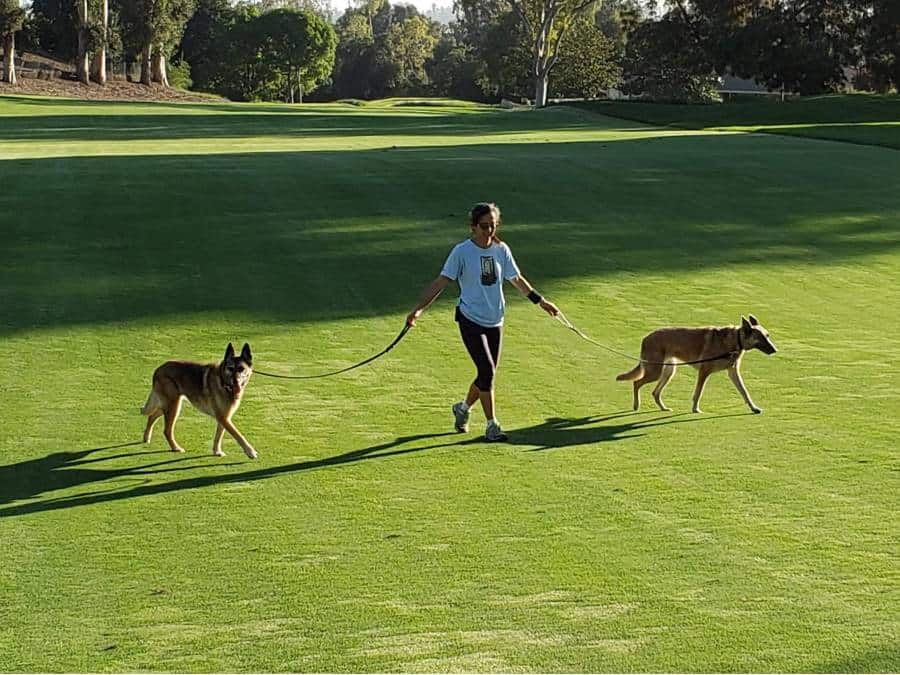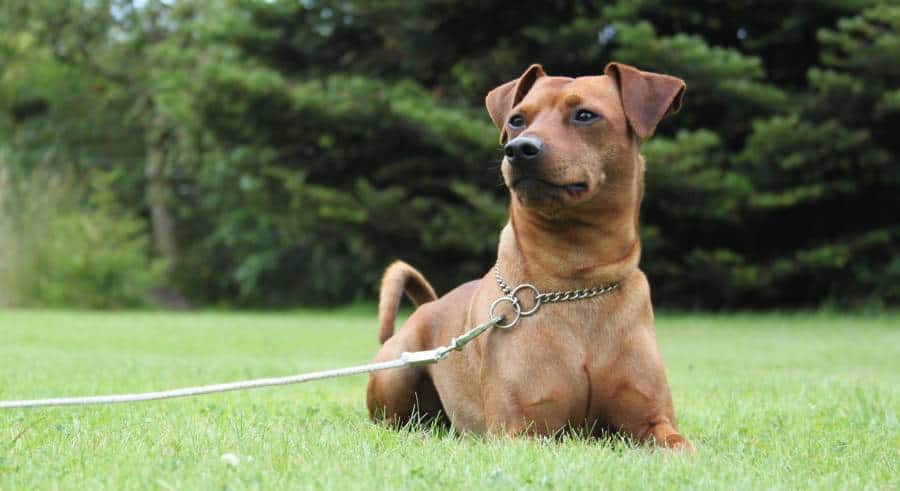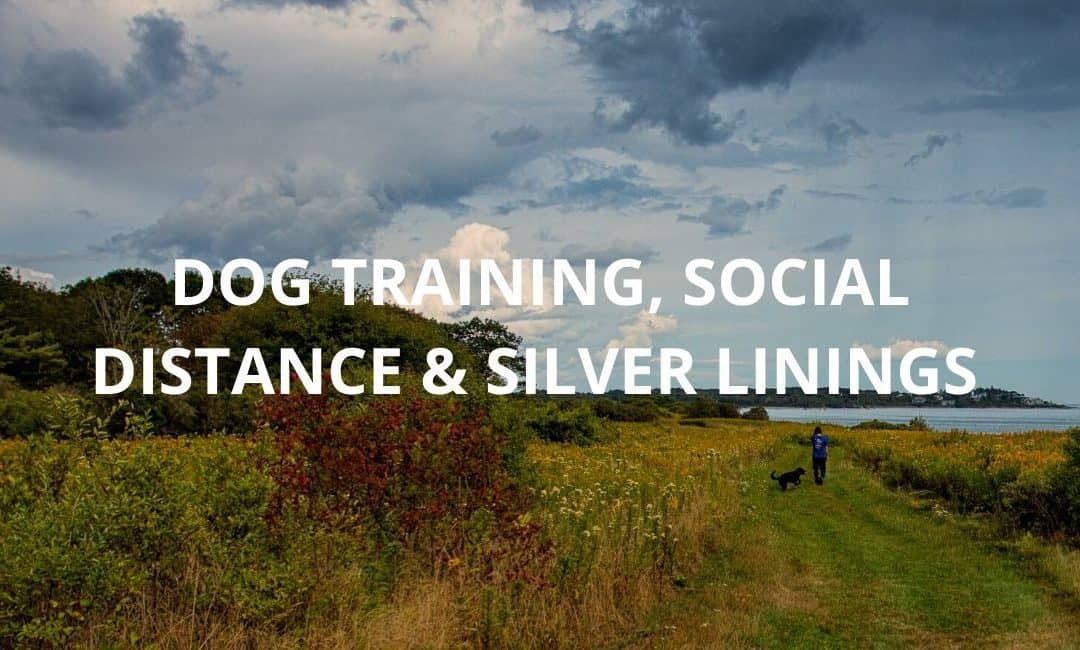Or, finding hidden dog training advantages to the current crisis.
I don’t know about you, but I’m struggling with staying positive as this whole COVID-19 thing drags on. (I admit I’m a trooper in a short-term crisis, but these interminable ones tend to drag me down.)
Therefore, it seemed a good time to attempt to rally and see if there could be any silver linings in this dark cloud. After all, to quote an old proverb, “Tis an ill wind that blows no good.â€
Which means, not that bad winds blow bad things (wouldn’t be much of a proverb, would it?), but that even pretty darned bad situations generally usher in at least some good.
I know, I know! We’re all sick of positive-minded proverbs and affirmations. If you’re in the later stages of positive-thinking fatigue (like me), either bear with me, or just look at the following as an intellectual exercise.
Here are 5 things I can see as positives for our dogs’ behavior and training during our current situation. (You will notice I refrained from saying “these trying timesâ€. You can thank me later.)
1. No pressure to meet and greet
Two types of dogs have difficulty when strangers (or strange dogs) get “up close and personal†– anxious, fearful, under-socialized dogs, and over-excited, social-butterfly-on-crack dogs.
In both cases, there is often a problem with well-intentioned people who insist on getting in a dog’s space, and who ignore the effect their attention has on the dog. (Whether that’s frightening the dog or winding him up.)
The remedy for this, from a training perspective, is to figure out a way to allow the dog to get comfortable with the presence of people who will simply let them be, without pressuring them.
Well, in both cases, we’re far more likely to have that opportunity now. In fact, it’s pretty easy to avoid interactions that are too much for your dog to handle calmly. We can smile, give an optional quick verbal greeting, and walk on! Or stand and chat from an approved distance (all the while modeling and praising calm, relaxed behavior).
And while this doesn’t directly address how a dog handles up close and personal interactions, it gives them lots of practice settling down about pre-interactions. Which, in my experience, is at least half the battle.
A huge bonus is that, if you’re the owner of such a dog, you can relax, knowing don’t have to anticipate warding off overwhelming interactions. Your dog picks up on your new comfort level, and relaxes even more. Nice!
Finally, because people are concerned about dog-to-dog transmission of germs, dog walkers are less likely to let their dog run up to strange dogs uninvited. they’re more likely to avoid letting their dog run up to mine. Awesome!

2. Time to get bored with one another
When we have limited time to spend with our dogs, it’s not unusual to try to maximize our time together – with playing, training, walks, playdates, snuggles, etc.
This is well and good – we want to make sure our dogs live happy, healthy lives, after all.
But having so much extra time in our dogs’ company gives us the ability to say, “Enough already! Go entertain yourself.â€
Which is what I think many clingy, needy dogs actually need.
Having some time every day where our dogs are expected to leave us alone and be independent (and be fine with it) is healthy for any dog, but especially those super closely bonded, Velcro types.
3. Learning to chill out
I think we often convince ourselves that our dogs will go bonkers if they don’t get hours of non-stop exercise each day.
The fact is, the majority of dogs don’t actually need it.
They don’t need to be going, going, going all the time, entertained and occupied every minute. No, not even high-drive, working breeds!
On the other hand, all dogs do need to learn to “be still†– in our presence and out of it.
I will always remember when we first moved out to Oregon, and were living in a rental house with a small yard in the middle of a rough community – a complete 180 from the peaceful, rural acreage my dogs were used to.
To say “it was not a fun place to walk dogs†would be a major understatement. And my dogs were used to running, not walking! And I was stressed out about not being able to get them the amount of exercise they’d been used to.
A friend of mine said to me: maybe they don’t need all that running and stimulation?
It honestly annoyed me at the time. But her remark proved to be true. My dogs were used to tons of exercise and room to stretch their legs at a high speed. But did they actually need it on an ongoing, daily basis?
No, not really. And while I won’t lie and say that year was one of our best, it was good for me to learn to allow them a slower pace and a less intense lifestyle.
While social distancing doesn’t directly help dogs learn how to handle “up close and personal” interactions, it does give them lots of practice settling down about pre-interactions. Which can be at least half the battle.

Honest-to-goodness rest and relaxation is crucial for good dog behavior.Â
4. Vacation from bad behavior
When working with problem dogs, I generally recommend giving a dog a 2 week break from challenging or triggering situations when first starting a new training/behavior program.
It’s just plain helpful to give the dog a chance to stop reacting simply out of habit.
For some dogs at least, we can certainly look at these past few weeks as an unplanned but possibly very useful break from bad behavior.
Now that parts of the country are beginning to open up gradually, those dogs should have a chance to be slowly, thoughtfully re-introduced to their problem situations. It’s quite an opportunity!
5. A chance to work on fundamentals
For many of us, we currently don’t have the option to work on things the way we’re used to – in structured situations and classes. Sure, we miss it. But is it completely a bad thing?
The fact is, some of the most important training you can do is working on “the behavior behind the behaviorâ€.
This may mean focusing on self-control, respect exercises, learning/practicing calming the heck down; or it may be specific exercises like turning away from distractions, offering eye contact for privileges, lightning fast sits, or rock solid stays.
These are not only skills that can be practiced outside the problem situation, I would argue they must be, in order for behavior to really improve.
So, rather than bemoan what we can’t do with our dogs during isolation, social distancing, and shut downs, maybe we need to see it as an opportunity to really thoroughly teach the behaviors our dogs need.
Then when they get in those tricky situations, they’re not struggling to process a behavior they’re being asked to do.

Wrapping Up
What about you? Have you identified any possible silver linings in this big ol’ storm cloud? I would love to hear what you’ve come up with.
Sincerely and with Best Wishes for a Successful Economic Re-Opening,
julie
(bio)
